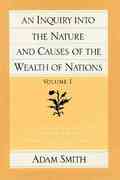Question
(Reading Below for Context) Sugar prices shot to four-year highs after a frost in Brazil cut the size of the cane crop in the world's
(Reading Below for Context)
Sugar prices shot to four-year highs after a frost in Brazil cut the size of the cane crop in the world's biggest producer, and hedge funds are adding to the market's momentum.
Prices for raw sugar futures have jumped 10% over the past month to trade at about 20 cents a pound in New York. Sugar prices haven't been that high since early 2017 and have climbed more than 60% over the past year.
A cold snap in Brazil sparked the rally. Severe frosts struck areas of the sugar-producing Center-South region including Paran, So Paulo and Minas Gerais in June and July. The unusual chill damaged the cane, stunted its growth and reduced its sugar content. That prompted farmers to reorganize their harvest times and diminished a crop that had already dwindled due to a prolonged drought.
Sugar is one of several commodity markets to have experienced volatility due to rare or extreme weather events in recent months. Coffee prices also leapt following frosts in Brazil. Hot, dry conditions in the U.S. scorched corn, wheat and soybean fields in Iowa and Nebraska. Wildfires lifted lumber prices in July.
"Whichever way you look at it, this season for Brazil is not going to be a good one," said Stephen Geldart, head of analysis at Czarnikow Group, a London-based company that trades sugar.
Traders' estimates of how much raw sugar the Center-South region will produce this year vary between about 29 million metric tons and 33 million, Mr. Geldart said, down from 38.5 million last year. "We will find out in the next month," he said.
Sugar's rally snaps a yearslong stretch of low prices set in motion by mammoth harvests in India , the world's second-biggest producer. It has brought some relief to farmers in Brazil, where domestic prices hit record highs in July, according to the International Sugar Organization.
"It's a very tough time for the sugar consumers," said Bruno Lima, head of the sugar and ethanol division for Brazil at StoneX Group. Buyers are trying to take advantage of any dip in the market to lock in prices for future deliveries, he said.
Global production will fall short of consumption by almost 4 million metric tons, the second consecutive year of deficit, the ISO said in late August. It forecasts that stockpiles of sugar will fall from 98.3 million metric tons this month to 95.3 million next September.
There is no prospect of a sugar shortage, traders and analysts say. Rather, higher prices are likely to draw sugar out of India and into the world market.
"The world really needs Indian sugar," said Michaela Helbing-Kuhl, an analyst at Commerzbank. Indian mills and farmers will export about six million metric tons this year, she forecasts.
Shipping constraints have added to the challenges of refiners and other buyers of sugar. The price of booking space on the bulk vessels used to transport raw sugar to refiners has surged, though not as far as rates for container ships that move commodities like coffee.
On key sugar routes such as Brazil to China, freight rates have roughly doubled over the past year, Mr. Geldart said. Traders are looking to pass higher transport costs on to customers and face difficulties or delays in shipping sugar out of producing countries.
Adding to sugar's upward momentum, hedge funds have piled into bets on higher prices. The number of bullish long positions held by money managers in raw-sugar futures outnumbered short positions by 268,094 contracts last week, Commodity Futures Trading Commission data show. That is up from just under 161,000 contracts in early April.
Sugar prices are likely to stay elevated for several months, analysts say, increasing the likelihood that consumers will eventually see higher prices on supermarket shelves. Brazil's poor growing weather will also reduce next year's crop, said Karim Salamon, head of analysis at Wilmar International, a big sugar trader.
"It's a perfect storm to destroy the cane," Mr. Salamon said of the combination of frosts and drought.
Questions:
a. Why did the price of sugar recently increase according to the article?
b. Given your answer in part a, illustrate using a supply/demand diagram, how your answers to part (a) would impact sugar prices. Label the original equilibrium price and quantity for sugar as P0 and Q0, respectively and then identify the new equilibrium price and quantity as P1 and Q1.
c. How will higher prices for sugar affect the market for cake mix, holding all else constant? Illustrate your answer using a supply and demand diagram for the cake mix market. Label the original equilibrium price and quantity for cake mix as P0 and Q0, respectively and then identify the new equilibrium price and quantity as P1 and Q1.
d. How will higher prices for sugar affect the market for corn syrup ( a consumer substitute for sugar), holding all else constant? Illustrate your answer using a supply and demand diagram for the corn syrup market. Label the original equilibrium price and quantity for corn syrup as P0 and Q0, respectively and then identify the new equilibrium price and quantity as P1 and Q1.
e. Cakes and cake frosting are complements and sugar is an input in the production of frosting. How would higher sugar prices affect the market for frosting? Label the original equilibrium price and quantity for cake frosting as P0 and Q0, respectively and then identify the new equilibrium price and quantity as P1 and Q1.
Step by Step Solution
There are 3 Steps involved in it
Step: 1

Get Instant Access to Expert-Tailored Solutions
See step-by-step solutions with expert insights and AI powered tools for academic success
Step: 2

Step: 3

Ace Your Homework with AI
Get the answers you need in no time with our AI-driven, step-by-step assistance
Get Started


